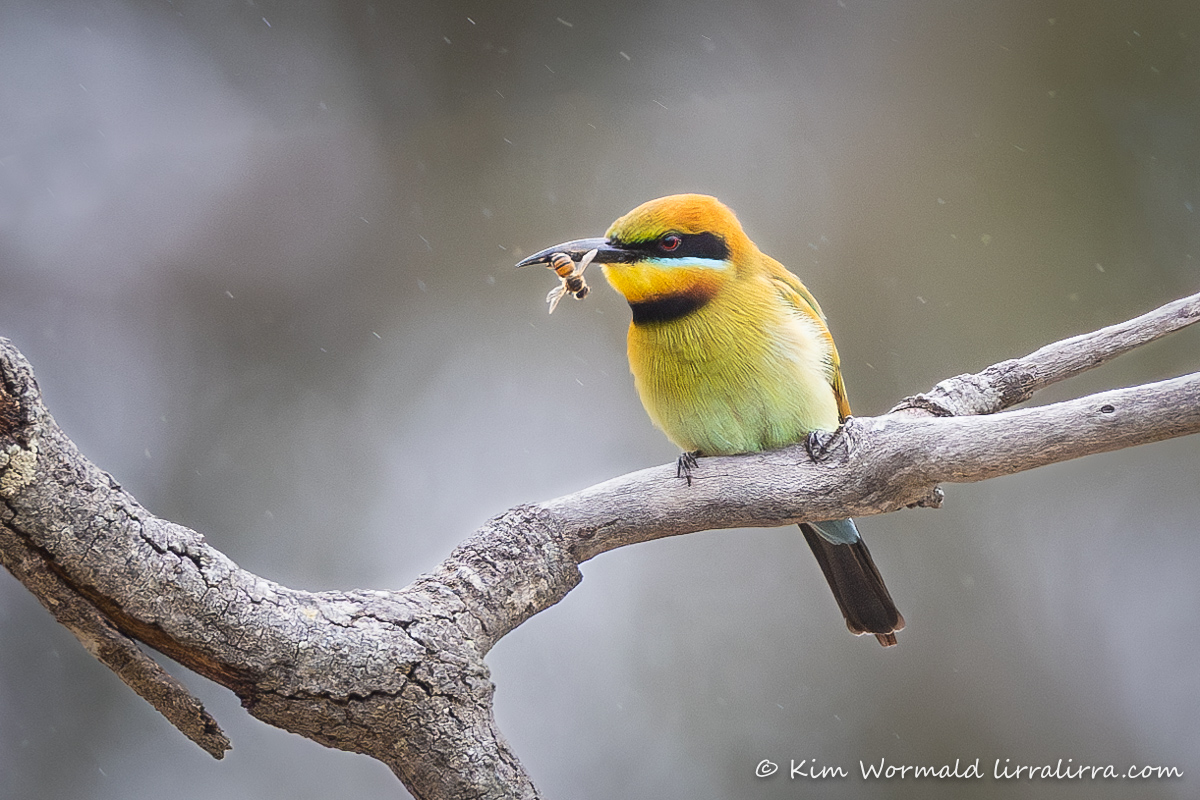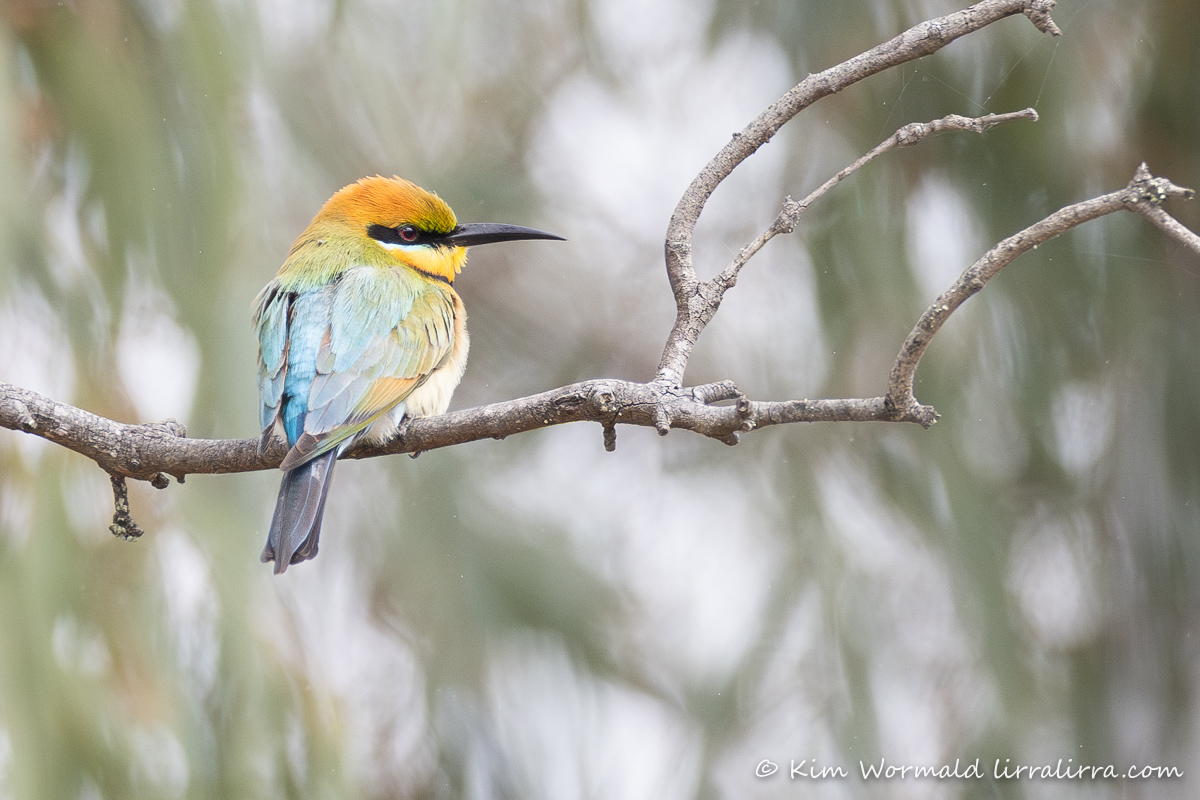Rainbow Bee-eaters are stunningly beautiful whenever you see them, but when it’s dull and drizzling they are an almost unbelievable splash of colour.

1/1250, f/5.6, ISO 1600
Canon R5, Canon RF 600mm f/4 IS USM
Rainbow Bee-eaters catch their food on the wing. They eat mainly bees and wasps but will also take other flying insects like dragonflies and butterflies. Before swallowing the bee in this photograph the bee-eater rubbed it against the branch to remove the bee’s stinger – they do this with bees and wasps to remove the venom.
Their colours are magnificent and I loved watching them dart around, twisting and turning, to catch their prey before returning to a branch to eat.

1/1250, f/5.0, ISO 1000
Canon R5, Canon RF 600mm f/4 IS USM
The Rainbow Bee-eater in the first image is female. Her tail filaments/streamers are short and stubby compared with the long, graceful tail filaments of the male in the high-key photograph above. The three photographs in this post were taken within five minutes of each other but each background is very different. The first background shows the darkness of the nearby trees and bushes, which highlights the individual raindrops. The photograph above was taken against the cloudy sky, while the shot below (my favourite) shows the middle level background with eucalyptus leaves and sky enhancing the shot.

1/1250, f/5.0, ISO 1000
Canon R5, Canon RF 600mm f/4 IS USM
It’s not just the background that I like in the photograph above but also the beautiful colours of the bird’s back. Rainbow Bee-eater is the perfect name for this glorious species.
Happy birding, Kim
~ Browse prints and gifts Lirralirra Shop
~ Facebook page Kim Wormald – lirralirra
~ Facebook group Ethical Bird Photography

These birds are incredibly beautiful Kim!! I hadn’t heard of the species before but will keep an eye open for them now.
They are really stunning Tess. I hope you get to see them soon.
Such beautiful birds. Is it wrong of me to hope that they find more wasps (particularly European ones) than bees? We do have some gloriously coloured birds though the more subtle charmers also have a home in my heart.l
I am envying your drizzle. We have had rain predicted repeatedly and it has not happened. Big sigh – and fears for the coming season and fires.
I agree about the wasps and the subtle charmers. About the rain, I seem to remember people being concerned here if there is too much spring rain as it promotes so much new growth. Whatever the story I hope that the coming season is a safe one for everyone and for the wildlife.
Such a glorious bird! I love the turquoise under their eyes. Wonderful photographs
‘Glorious’ is such a beaut word for them, I’m so glad you like the photographs
Wow! I have never heard of this bird, Kim – glorious colours you’ve captured of its plumage, and it must have incredibly sharp eyesight to capture bees and wasps zipping along. I’m glad it kills wasps – hopefully that nasty European type – but it’s a bit of a shame about the bees and butterflies…I hope my fave blue-banded bees are able to dodge that sharp beak! Oh well, as David Attenborough says, in nature, everyone is someone else’s dinner!
They are seriously beautiful birds Deirdre, and you’re right about their eyesight! They forage in a way that is very much like Grey Fantails. I hope they take European wasps too, and that they leave the blue-bandeds alone. I hope you get to see them soon.